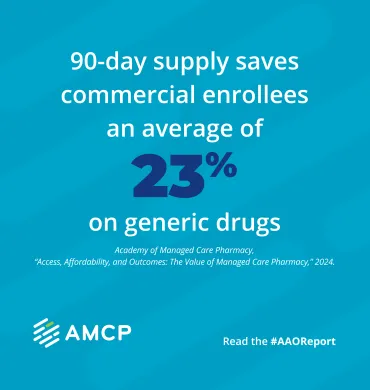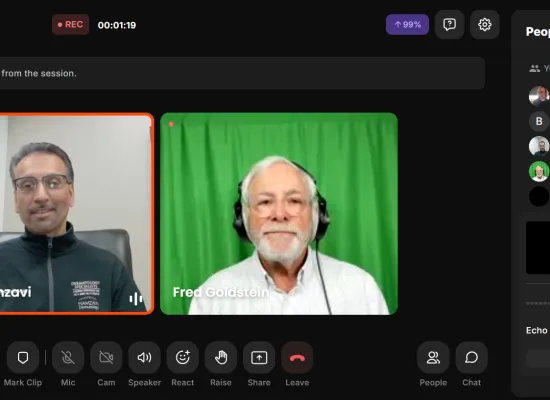
A Managed Care “North Star:” AMCP’s AAO Report Helps Illustrate How Managed Care Tools Maximize Patient Outcomes
In a world where innovative therapies are entering the market at an unprecedented pace, stakeholders need quick access to reliable information to help ensure the health care system is working as it should. They need fresh perspectives and data to keep up with how tools and techniques are working to help maintain balance in the managed care ecosystem. AMCP, in partnership with AMCP Research Institute (ARI), recently released the 2024 Access, Affordability, and Outcomes (AAO) report, which serves as a useful guide on how managed care pharmacy tools drive impact for patients.
As managed care pharmacists, information is our "North Star." It defines and drives definitions within our practice and combines with data to help explain the significance and value managed care tools bring to the market. We also deploy it to increase stakeholders’ understanding of where gaps exist—so that we may work collectively to overcome them.

In this regard, AMCP’s AAO report covers fundamental health care components, cost control strategies, and emerging real-time issues related to practice impact. Before my time at AMCP, I was a member for 24 years, so I was able to see firsthand how information like within this report shaped my work and the managed care pharmacy landscape. If you know me, you’ll know how much I look forward to pouring over resources like this, so I wanted to call out what I found noteworthy within this year’s report.
To start, I’d highlight the way the AAO report helps define and illustrate managed care pharmacy tools—starting on page 15—like prior authorization and step therapy, explaining how they help ensure patients are getting the care they need, all at a price they can afford. These utilization management frameworks can address cost concerns and reduce the potential for off-label use, misuse, or abuse, all of which help improve patient safety, adherence, and outcomes. This is what makes them so critical to the managed care landscape. Patients deserve to get the care they need at the right price for them, so this report helps provide important details and context for stakeholders to make sure our framework allows these tools to work together seamlessly, as intended, to maximize their positive impact.
Indeed, various studies show that Medication Therapy Management (MTM)—which optimizes therapeutic outcomes for patients—benefits patients by reducing the cost of care and hospital utilization. It does this by improving medication adherence, decreasing potential harm that might occur when taking medication, and more. MTM has a real impact on patients, but it’s not universally understood. That’s where the AAO report is helpful. On page 18, for example, you’ll find research from Humana detailing how MTM services like targeted and comprehensive medication review helped reduce inpatient admissions and emergency department visits by patients.
That’s not all. MTM services are also linked to increases in medication adherence—something our industry is laser-focused on improving for patients. The AAO report sends a clear message that MTM and other managed care tools are the kinds of health care support that make a difference in people’s lives, both in the short- and long-term. This type of data and information guide our work here at AMCP and at the AMCP Foundation.

It's important—and interesting—to note that many of the tools used to make medication use more efficient are analyzed individually at a regulatory level. That’s a bit counterintuitive since these tools are designed to complement each other and should be applied and reviewed collectively (depending on the patient’s situation). It’s also worth noting that adjusting the flexibility of one tool will inevitably influence another. That’s why we designed the AAO report to give stakeholders a holistic view of the range of tools available to providers and patients and better understand how they interact with each other to optimize treatment plans.
I think the AAO report does an excellent job combining evolving perspectives with timely analysis of the current body of research, to highlight managed care pharmacy’s impact on patient outcomes. If you haven’t yet read the report, I hope you’ll take a minute to do so. I welcome your feedback and thoughts on what might be helpful to include in future editions.
If you’re not an AMCP member already, I’d encourage you to become one. Our members gain access to executive summaries of the report and timely member webinars—diving deeply into relevant and nuanced topics you need to know for your organization. For example, we’re gearing up to release a survey in early 2025 that highlights emerging trends within the managed care landscape, with a focus on addressing health disparities. You won’t want to miss it.
I’d also love to quickly highlight the wonderful work the AMCP Foundation does. Our programs for students help drive innovation and advance the future of managed care, like our upcoming annual National Student Pharmacist Pharmacy & Therapeutics Competition (now in its 25th year!). Fostering the next generation of managed care pharmacists is what makes me so motivated about my role here at AMCP, so I hope you’ll share far and wide to student pharmacists who might be interested in the competition. Thank you!

Mitzi Wasik, BS, RPh, PharmD
SVP, Practice Strategy & Innovation & AMCP Foundation Executive Director
Published on Nov. 19, 2024
Featured News & Resources
See Full CalendarAward Applications Open
AMCP eLearning Day: Nexus Encore
AMCP 2026 Registration Opens
Upcoming Events
AMCP offers a wide variety of educational opportunities, from events and webinars to online training.







